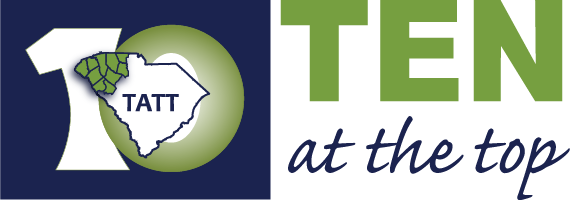by Jim Shew, Vice President—Employee Benefits, Marsh & McLennan Agency

Jim Shew, Vice President—Employee Benefits, Marsh & McLennan Agency
COVID-19 has created unprecedented changes and challenges for employers, employees, and healthcare systems across the country and around the world. For employer health plans, there is a particular challenge to understand the financial impact of COVID-19. Will the virus lead to more sickness and increased costs? Reduced utilization and thus lower costs due to shutdowns? Increasing rates of morbidity due to less routine care? Information is rapidly changing, and it is impossible to know for certain what the future holds; however, experience through the pandemic thus far has revealed some relevant data that informs employer expectations.
First, utilization is increasing in some specific areas:
- Diagnostic laboratory costs are increasing due to federally mandated waiving of the cost of COVID-19 testing as well as all testing ordered by a physician. 2020 diagnostic laboratory utilization is therefore likely to continue to be high as testing continues. While COVID-19 tests are relatively inexpensive ($50-150), more of the population is being tested. On average, roughly 15% of covered members will receive a COVID-19 test.
- Telemedicine: Nationwide, just 10% of healthcare consumers had used telemedicine prior to the pandemic. With the outbreak of COVID-19, more services are covered by insurance (and Medicare) through telemedicine, and healthcare systems have expanded capacity for telemedicine. Many routine visits and non-urgent health concerns have already switched from in-person to phone and video visits, and this will likely continue.
- Mental health services utilization may increase as individuals cope with difficult social, economic, and health situations. In addition, some mental healthcare providers are also converting appointments from in-person to phone or video.
- Inpatient hospital utilization has increased as individuals are hospitalized due to COVID-19. The nationwide average cost per day for a hospital stay is $4,000 – $5,000 and the average cost per COVID-19 inpatient admission is $38,000.
Conversely, employers have observed clear utilization decreases in elective and non-emergent procedures as well as routine medical, dental and vision procedures.
With all of this as a backdrop, we are getting to the time of year for health insurance plan renewals for 2021, and planning for cost and utilization expectations in 2021 cannot be done in the traditional way. The past 5+ months of experience are probably not going to be predictive of what employer plans will experience in 2021. Employers will now need to gauge the following different factors:
- Pent-up demand: This may occur as infection rates decline. Individuals who deferred elective and non-emergent services may seek these services later in 2020 or 2021, in addition to those who are seeking care along usual time horizons.
- Demographic risk: Thus far, epidemiologic studies have consistently shown that older (60+) populations individuals with pre-existing conditions are at a higher risk of developing severe symptoms, complications, and potential death from COVID-19. Employers covering greater concentrations of older individuals and individuals with pre-existing conditions are at higher risk of increased health plan costs.
- Geographic risk: Employers with employees traveling to high risk, COVID-19 areas or to countries with large concentrations of COVID-19 cases face a higher risk of an increase in health plan costs.
- Industry risk: Employees working in certain industries where social distancing is not possible or where exposure to potentially COVID-19 infected individuals is a requisite part of the job also present potential cost implications. These industries include manufacturing, healthcare, retail, hospitality, and public safety sectors.
- Government risk mitigation efforts: The impact of social distancing and other local, regional, and national government risk mitigation strategies will affect the rate of the infection spreading throughout the U.S., and thus health plan costs.
Also in preparation for upcoming health plan renewals, it is essential that employers maintain an updated plan document in 2020 to reflect any plan design changes that were made in response to the COVID-19 pandemic. Some employers waived costs related to COVID-19 treatment or extended benefits to furloughed employees for some period of time. Documenting those changes, particularly for larger employers who self-fund their health plan and purchase stop-loss insurance for large claims, is especially important.
With COVID-19 continuing to evolve daily and with the continued development of potential vaccines, it is not possible to accurately predict the final impact this pandemic will have on employer health plans. But with that said, there are some actions employers can take to respond to the environment and risks they are in as they plan for their 2021 health plan offerings:
- Use a third party actuary to estimate the impact of COVID-19 on your health plan for 2021, and review those estimates as new information becomes available.
- Collaborate with your medical carrier or TPA to understand and evaluate any cost projections and/or premium rates
- Adjust your medical plan budget as appropriate, and IBNR reserve if needed
For self-funded employers purchasing stop-loss insurance…
- Review individual and aggregate stop-loss coverage provisions and renewal forecasts
- Communicate with the stop-loss carrier regarding mid-year changes to the plan document associated with COVID-19 treatment and testing to ensure no mid-year change to employer stop-loss attachment factors and/or premiums
- Confirm that the stop-loss carrier will not decline a stop loss reimbursement if employees are furloughed or allowed to take an extended leave due to COVID-19.
If you would like more information, you may want to also visit the COVID-19 Resource Page from Marsh & McLennan Agency.
